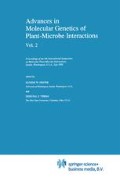Abstract
Crown gall tumors incited by A. tumefaciens release compounds called opines, which serve as nutrient sources and as signal molecules for the colonizing bacteria. One such opine, octopine, induces expression of a cognate catabolism operon (occQ) via a LysK-type protein called OccR. Here we describe biochemical properties of complexes formed between OccR and operator DNA. This regulatory system was reconstituted in vitro using purified OccR protein and Escherichia coli RNA polymerase. OccR binds with high affinity to a single site overlapping the divergent occQ and occR promoters. Octopine increases the gel mobility of OccR-DNA complexes, relaxes an OccR-incited DNA bend, and shortens the DNase I footprint of OccR. This operator contains a 6 bp dyad symmetry in its left half and an unrelated 4 bp dyad symmetry in its right half. A 19 bp region including the right dyad is necessary and sufficient for high affinity OccR binding; while a larger region including both the left and right dyads is necessary for DNA bending and transcriptional repression.
Access this chapter
Tax calculation will be finalised at checkout
Purchases are for personal use only
Preview
Unable to display preview. Download preview PDF.
References
Ansari, A. Z., Chael, M. L., and O’Halloran, T. V. (1992). Allosteric underwinding of DNA is a critical step in positive control of transcription of Hg-MerR. Nature 355: 7–9.
Habeeb, L. F., Wang, L., and Winans, S. C. (1991). Transcription of the octopine catabolism operon of the Agrobacterium tumor-inducing plasmid pTiA6 is activated by a LysR-type regulatory protein. Mol. Plant-Microbe Interac. 4: 379–385.
Henikoff, S., Haughn, G. W., Calvo, J. M., and Wallace, J. C. (1988). A large family of bacterial activator proteins. Proc. Natl. Acad. Sci., USA 85: 6602–6606.
Kerppola, T. K., and Curran, T. (1991). Fos-Jun heterodimers and Jun homodimers bend DNA in opposite orientations: implications for transcription factor cooperativity. Cell 66: 317–326.
Kim, J., Zwieb, C., Wu, C., and Adhya, S. (1989). Bending of DNA by gene regulatory proteins: construction and use of a DNA bending vector. Gene 85: 15–23.
Lobell, R. B., and Schleif, R. F. (1990). DNA looping and unlooping by AraC protein. Science 250, 528–532.
Long, S. R., R. F. Fisher, J. Ogawa, J. Swanson, D. W. Ehrhardt, E. M. Atkinson, and J. S. Schwedock. (1991). Rhizobium meliloti nodulation gene regulation and molecular signals. in Advances in Molecular Genetics of Plant-Microbe Interactions. H. Hennecke and D. P. S. Verma, (eds) Kluwer, Dordrecht.
Schultz, S. C., Shields, G. C., and Steitz, T. A. (1991). Crystal structure of a CAP-DNA complex: the DNA is bent by 90°. Science 253: 1001–1007.
Slauch, J. M. and T. J. Silhavy. (1991). cis-acting ompF mutations that result in OmpR-dependent constitutive expression. J. Bacteriol. 173: 4039–4048.
Tempe, J., and Petit, A. (1982). Opine utilization by Agrobacterium. p. 451–459., in G. Kahl and J. Schell (eds), Molecular Biology of Plant Tumors. Academic Press, New York.
Verrijzer, C. P., J. A. W. M. van Oosterhout, W. W. van Weperen, and P. C. van der Vliet. (1991). POU proteins bend DNA via the P00-specific domain. EMBO J. 10: 3007–3014.
Wang, L., J. D. Heimann, and S.C. Winans. 1(992). The A. tumefaciens transcriptional activator OccR causes a bend at a target promoter, which is partially relaxed by a plant tumor metabolite. Cell 69: 659–667.
Wu, H.-M., and D. M. Crothers. (1984). The locus of sequence-directed and protein induced DNA bending. Nature 308: 509–513.
Zwieb, C., Kim, J., and Adhya, S. (1989). DNA bending by negative regulatory proteins: Gal and Lac repressors. Genes Dev. 3: 606–611.
Author information
Authors and Affiliations
Editor information
Editors and Affiliations
Rights and permissions
Copyright information
© 1993 Springer Science+Business Media Dordrecht
About this chapter
Cite this chapter
Wang, L., Cho, K., Helmann, J.D., Winans, S.C. (1993). The Agrobacterium Tumefaciens Transcriptional Activator OccR Causes a Bend at a Target Promoter that is Partially Relaxed by a Plant Tumor Metabolite. In: Nester, E.W., Verma, D.P.S. (eds) Advances in Molecular Genetics of Plant-Microbe Interactions, Vol. 2. Current Plant Science and Biotechnology in Agriculture, vol 14. Springer, Dordrecht. https://doi.org/10.1007/978-94-017-0651-3_13
Download citation
DOI: https://doi.org/10.1007/978-94-017-0651-3_13
Publisher Name: Springer, Dordrecht
Print ISBN: 978-90-481-4221-7
Online ISBN: 978-94-017-0651-3
eBook Packages: Springer Book Archive

